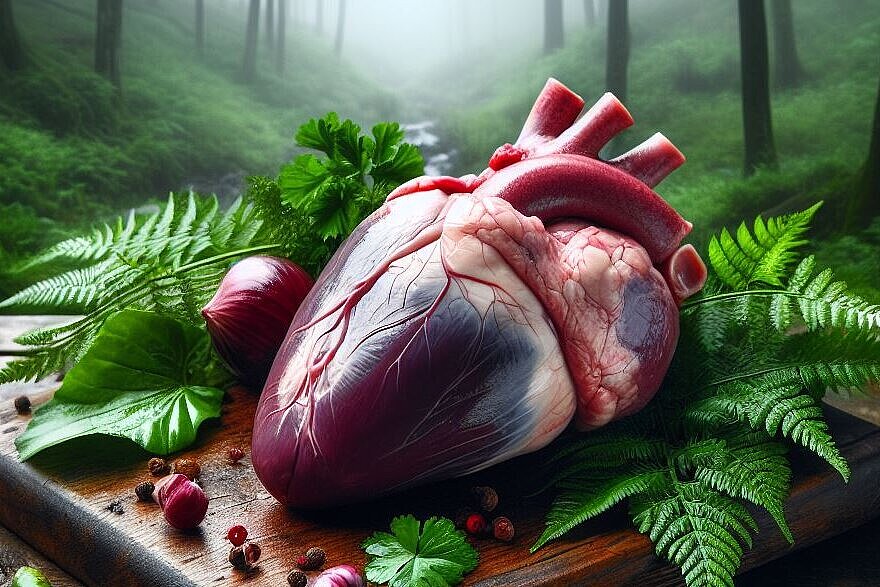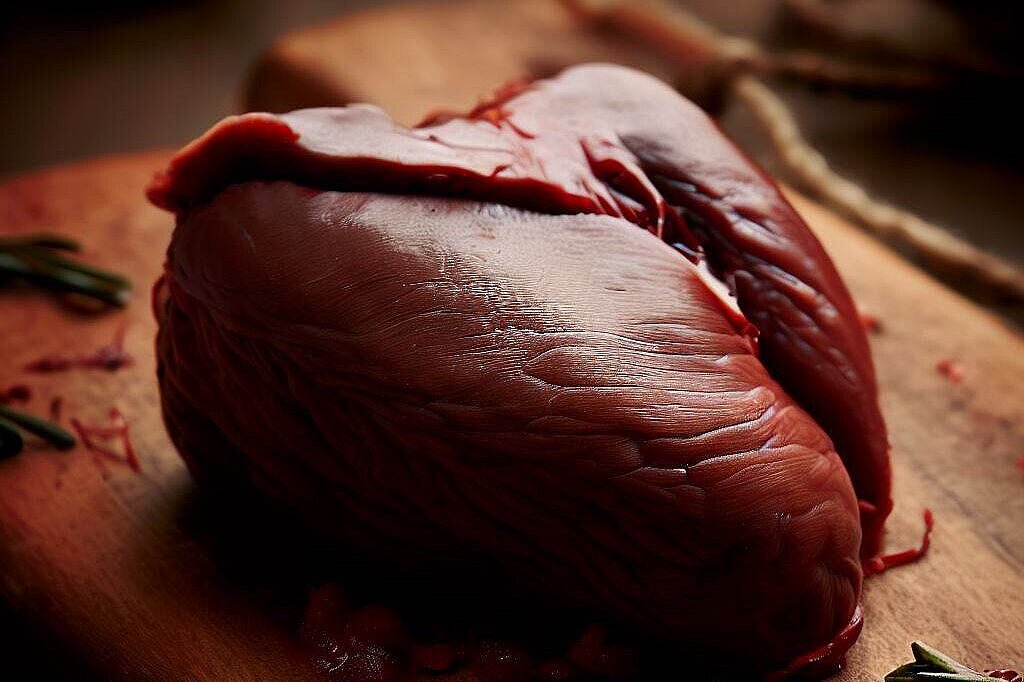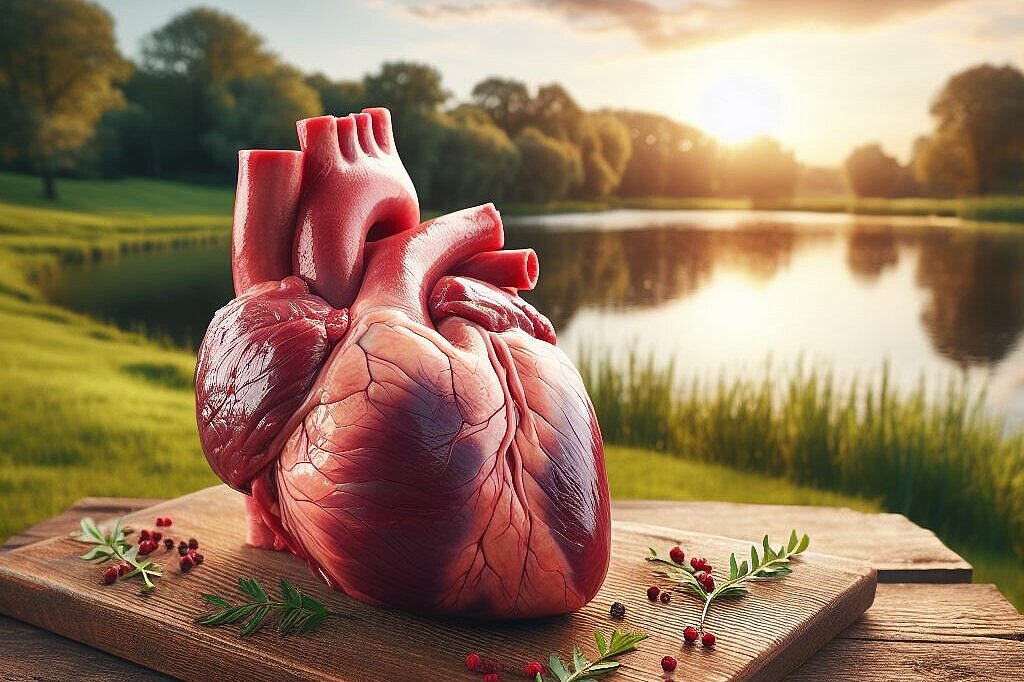Calf hearts

What are calf hearts?
Calf hearts are the hearts of young cattle that are usually slaughtered between six and twelve months old. They belong to the so-called offal or by-products that are produced during meat processing. Calf hearts are very muscular and contain a lot of protein, iron and B vitamins. They are therefore a high-quality source of protein for dogs.
What are the benefits of veal hearts for dogs?
Veal hearts have several advantages for dogs that you should take into account when feeding them. Firstly, they are very tasty and are eaten with pleasure by most dogs. Secondly, they are relatively low in fat and are therefore also suitable for dogs that tend to be overweight. They also provide important nutrients that support your dog's immune system, blood formation and muscles. Calf hearts can also be used as a treat or reward, for example dried or cooked.
What are the disadvantages of veal hearts for dogs?
However, veal hearts also have some disadvantages for dogs that you should not ignore. For one thing, they can have a high bacterial load if they are not fresh or hygienically processed. This can lead to diarrhea or vomiting. Secondly, they can lead to an oversupply of certain nutrients, especially vitamin A, if they are fed too frequently or too much. This can lead to symptoms of poisoning or damage to the liver. Veal hearts should therefore only be fed in moderation and alternated with other types of meat.
How do you feed veal hearts to dogs?
Veal hearts can be fed to dogs raw or cooked. Raw veal hearts should only be obtained from trustworthy sources and should be as fresh as possible. When cooked, they should not be heated for too long in order to preserve the nutrients. Veal hearts can be fed as part of a balanced barf diet or as a supplement to dry or wet food. The recommended amount of calf's heart depends on your dog's size, age and activity level. As a rule of thumb, offal should make up around 10 to 15 percent of the total meat ration.
Veal hearts are a tasty and nutritious ingredient for dogs that can have many health benefits for your four-legged friend. However, they should only be fed in moderation and alternated with other meats to avoid over- or under-supply of certain nutrients. Veal hearts can be offered raw or cooked, depending on what your dog prefers. However, always pay attention to the quality and freshness of the veal hearts to avoid possible infections or poisoning.
If you notice any signs of hypersensitivity or poisoning in your dog, you should see your vet immediately. We are not a substitute for a vet, but we try to be as accurate as possible. Every dog reacts differently and we recommend you get a second opinion or consult your vet if in doubt.
Stay healthy and take good care of your four-legged friend!😊
Similar to Calf hearts
Duck heart is a so-called offal, i.e. an organ of the animal. It is part of the muscle meat and is therefore rich in protein, iron and other minerals. Duck heart has a high content of taurine, an...
Chicken hearts are the muscles that pump blood through the poultry's body. They belong to the so-called offal or by-products and are often referred to as offal. However, this does not mean that they...
Lamb hearts are the hearts of young sheep, usually slaughtered when they are less than a year old. They are a muscle organ and consist mainly of muscle meat. Lamb hearts have a firm consistency and...
Beef hearts are, as the name suggests, the hearts of cattle. They belong to the so-called offal or organ meat, which is often regarded as a by-product of the meat industry. However, they are a...



